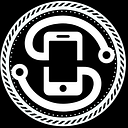Why mHealth Apps Are the Future of Healthcare
Though slow to embrace digital transformation compared to eCommerce and fintech, the healthcare sector is swiftly transforming. The way patients engage with doctors, observe their vitals, and manage their treatment plans is changing as cell phones become little health hubs. It also goes beyond convenience. By addressing inefficiencies that have dogged healthcare for decades, mHealth is enabling more data-driven, even proactive medical support.

For developers, this area is humming with possibilities. Creating a mHealth app is about solving practical challenges, not only about designing a clean UI. Demand for strong, scalable, flexible, and interoperable solutions is growing from AI-driven diagnostics to wearables that transmit real-time vitals, from smart medication tracking to telehealth interfaces.
The Real Value of mHealth Apps
Data fragmentation and delays in traditional healthcare systems often cause bottlenecks affecting patients and providers. While unstructured medical records and fractured data sharing lead doctors to rely on a patient’s recollection rather than structured understanding, long wait times push medical resources thin. Particularly for those with chronic conditions, these inefficiencies cause treatment gaps; this is a problem that is growing as cardiovascular diseases, diabetes, and respiratory illnesses currently account for 75% of all deaths globally. Healthcare demand is rising faster than traditional systems can manage, with an aging population predicted to reach 1.4 billion by 2030, placing even greater strain on already stretched resources.
mHealth apps are rewriting the script by offering instant access to care, remote patient monitoring, real-time data synchronization, and assistance in doctors making faster, more informed decisions. This change is especially vital given chronic disease treatment, aging populations, rising healthcare expenses, and patient expectations that still stray from the system. With mHealth solutions, users may take charge of their health instead of needing in-person visits for every little update; doctors only intervene when absolutely needed.

Trends Shaping the Future of mHealth
The mHealth landscape is not only changing but also accelerating at an explosive pace. Several important changes are altering how developers handle usability, security, compliance, and scalability in mobile healthcare applications.
AI-Driven Healthcare: From Chatbots to Predictive Analytics
Already ingrained in diagnostic tools, remote monitoring systems, virtual assistants, and tailored therapy recommendations is AI. First-line support for patients is provided by NLP and machine learning-powered chatbots helping them arrange appointments, respond to common medical concerns, and even triage symptoms before they get to a doctor.
Still, the actual game-changer is prediction analytics. Real-time patient data analysis allows AI to identify early warning signals of chronic diseases, highlight possible drug interactions, suggest lifestyle modifications, and even offer therapy changes prior to disease aggravation.
IoT and Wearables: Real-Time Data, Anywhere
Wearable technology is changing how developers, doctors, patients, and researchers approach healthcare. Thanks to devices such as smartwatches, ECG patches, blood glucose monitors, and biosensors, passive health tracking has begun to provide real-time, actionable insights.
This requires creating cloud-based systems that can manage continuous data streams, guaranteeing safe, low-latency, high-accuracy connectivity between devices and healthcare providers. The difficulty, though, is gathering data and ensuring it is handled, examined, and smoothly integrated into patient records.
5G-Powered Remote Care: The End of Geographic Barriers
When in-person visits became challenging, telemedicine became rather popular. Nonetheless, many rural and distant places still suffer from low bandwidth and connectivity problems. Let us now introduce 5G.
5G allows for real-time video consultations, remote robotic surgeries, AR-assisted diagnostics, and high-resolution medical imaging, which were previously impossible. It offers ultra-fast speeds and nearly zero latency.

mHealth isn’t just a trend — it’s a fundamental shift in how healthcare operates. The ability to predict, prevent, and personalize treatment through mobile solutions is becoming the industry standard. As AI, IoT, 5G, blockchain, and cloud computing continue to evolve, the next wave of mHealth apps will be faster, smarter, more secure, and more interconnected than ever.
If you want to learn more about the benefits, examples, and real-world use cases, check out the full article here.

